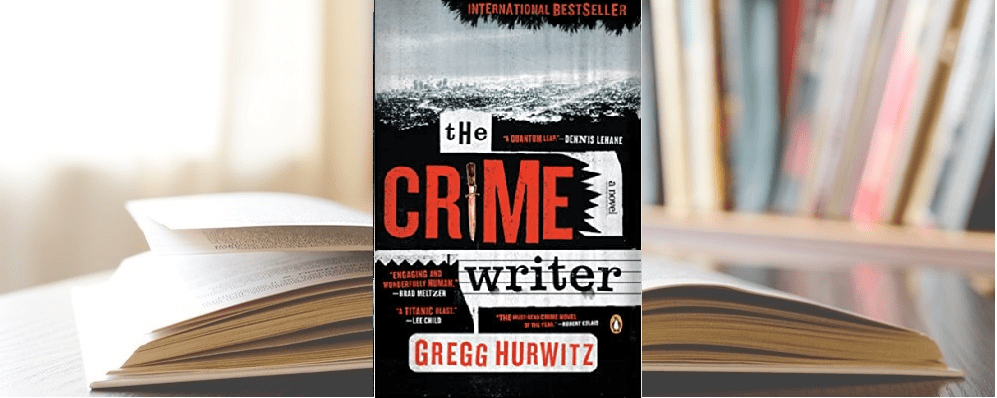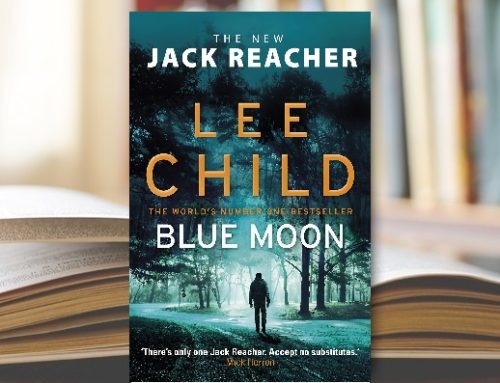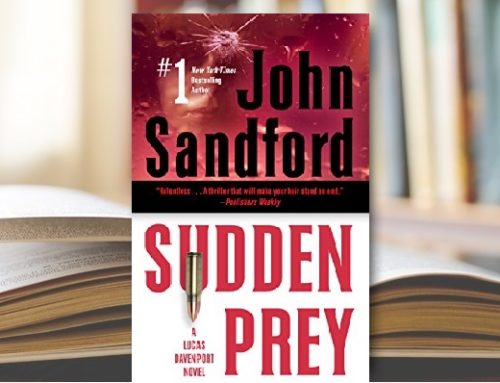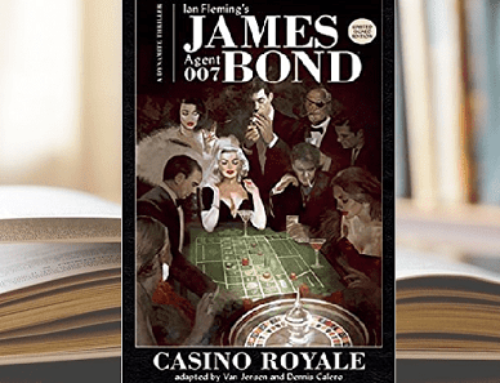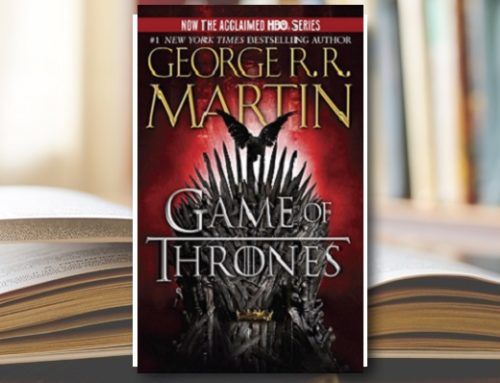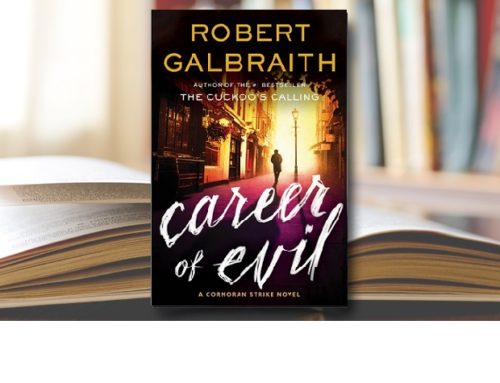[by Ross Browne]
If there were ever a novel that writers and editors could take special pleasure in devouring like candy, The Crime Writer by Gregg Hurwitz is it. Putting aside the clever plot device that makes the book so naturally irresistible to novelists, The Crime Writer is a smartly written novel that stands out as a role model of writing and storytelling craft in the mystery/suspense genre.
Factor in that it’s about a mystery writer who, with the help of his editor, uses the mind of his fictional protagonist (and the conventions of plotting crime fiction) to solve two murders, and you’ve got a true delight for anyone who writes, edits, or publishes this kind of novel. The Crime Writer is a mercilessly entertaining showcase on how to plot, characterize, pace, and stylize upscale genre fiction in a memorable way.
The Plot
Set in Los Angeles in 2007, The Crime Writer tells the story of a novelist who is found convulsing over the body of his former fiancée, hands wet with blood from the handle of a boning knife buried deep in her chest. Four months later, he’s released from the hospital holding a jar. Inside is his own brain tumor, a lumpy, gray piece of malignant tissue to which he owes a verdict of not guilty by reason of temporary insanity.
In his heart, Drew Danner—a likable yet effectively unreliable narrator/protagonist—knows he’s no killer (or at least desperately wants to believe that). But he has no memory of the night in question and has had enough memory lapses since that he has to wonder if he did it. Later, when police discover a second murder done with the same M.O., Danner is in big trouble. He’s either guilty as hell or being artfully framed in diabolical fashion. He risks everything in a battle for truth and probes the darkest recesses of what desperation can drive people to, questioning his own sanity at every turn. The result is a deeply absorbing thriller that’s both comfortably familiar and decidedly original.
The Characters
Helping Danner along the way is an unusual supporting cast that includes his publishing editor and confidante, Preston, who influences the plot in surprising ways.
One of the novel’s unusual hooks sets when Preston encourages Danner to write the story as it unfolds and approach his investigation the way his protagonist would in his popular series of crime novels. Unfortunately, it’s in one of these very novels that the attorney attempting to prosecute Danner finds some of the most damning evidence of what its author may be capable of.
I believe, in my darkest heart of hearts, that when fate and passion align, every last one of us…is capable of murder.
Putting a mystery writer in the role of amateur sleuth might sound hard to make convincing, but in the hands of Hurwitz, it plays quite well. What emerges is a gritty, imaginative, yet believable LA crime thriller with a smart conceptual hook that just works.
But there’s far more to be admired here, and novelists writing in similar genres can learn from what Hurwitz does so well.
The Takeaways
1. Start with a great premise
Our editors here at TED often describe premise as the “what-if” question upon which your plot is based. Here’s what I’ve come up with for The Crime Writer:
What if a popular crime novelist accused of two murders had to take on the role of his series’ protagonist to exonerate himself and bring the real perpetrator to justice?
Or something like that. Not bad, right? I consider this an effective premise that spins a classic whodunnit plotline in a new and highly imaginative direction. ’Nuff said.
If you’re writing a suspense novel—or any kind of novel, really—try distilling your plot to a what-if question in the same fashion. Consider the answer you come up with from all angles. Does it sound interesting? Different? Unusual? Book-worthy? If so, that’s a sign you’re on the right track. If it sounds a bit ho-hum, then the foundation of your story may need some work.
2. Build a compelling plot around that premise
“Compelling” means different things to different readers, but in crime fiction, a compelling plot will usually:
- Engage quickly
- Put something meaningful on the line for the protagonist early in the novel
- Force the protagonist to be thoughtful and proactive in pursuit of the plot resolution and outwitting the bad guy(s)
- Layer conflict on top of conflict as the story unfolds Introduce surprising plot twists
- Give readers an emotional stake in the outcome of the story
- Support character arc (have the story unfold in a way that inspires change in the lead character)
- Introduce red herrings along the way so the identity of the true perpetrator isn’t too easily guessed
- Lead the protagonist into tense, exciting situations so memorable scenes can unfold
- Arrive at a strong climax toward the end, where it appears unlikely that the protagonist will prevail
- Resolve in a way that’s satisfying yet not too easily predicted
I’m not a big fan of plot spoilers in these editorial reviews, but Hurwitz does a masterful job with all of this. Our advice for suspense writers is to use the items of the list above as valuable metrics in your toolbox to evaluate your story. Take a dispassionate look at how your plot measures up. This can help you find soft spots and opportunities to improve your story at the foundational level.
3. Find a fitting, captivating setting for your story and then exploit it and bring it to life in memorable ways
What Hurwitz does with the city of Los Angeles is downright amazing. While aspects of this story could work just fine in any big city in America, Hurwitz wisely incentivizes police cooperation with Danner’s investigation via a plot element that pretty much demands the story be set in LA. This is a city he clearly knows well and brings to life so vividly. It feels familiar to readers who know the city, yet the author’s rendering is fresh and distinctive and very much his own.
I think many writers will share my admiration for the two time-outs Hurwitz takes for some vivid and intense narrative renderings of the city of LA. What he does here is unusual but stunning. They’re brilliantly written and fit beautifully in the story (despite slowing it down for a few pages) because they so effectively match the point of view of a character who is a professional author. Amazing stuff!
While we’re not recommending authors imitate this exact approach (unless perhaps as a sidebar literary experiment), we do suggest looking carefully at where your story is set and considering the extent to which you’ve succeeded in making the identity of that setting memorable and distinct. If you haven’t put some thought and effort into a careful rendering of your setting, then you may have some work to do.
4. Populate your novel with a cast full of memorable personalities
There’s such a variety of characters here, all of them interesting, all of them believable in their own ways. They also all have interesting backstories and interconnect in a smart way.
I’ve already mentioned Preston, who’s mysterious in his own right and great fun to read about thanks to his splashy personality and surprising influence on the story itself. But there’s also Chic, a retired professional ball player who may be one of the most loathed Los Angeles Dodgers the city of angels has ever known. There’s Hector, a graffiti artist living in foster care whose knowledge of LA’s mean streets helps Danner in more ways than one. There’s the badly scarred (literally and figuratively) but beautiful clinical psychologist who becomes a love interest for Danner. We’ve got good cops and bad cops and close friends whose loyalty is challenged. All told, it’s a diverse, wonderful cast of characters, some of whom inject welcome rays of humor and levity into what’s in many ways a very dark novel.
Most writers intuitively gravitate to making their characters interesting. But some overlook the value of variety and contrast within the characterization effort. So don’t hesitate to ask yourself how memorable you consider your lead characters to be and why. And how different they are from one another. And why, exactly, you believe readers will care about them. Doing so will either affirm the strength of your cast or uncover opportunities for improvement.
5. Thwart your protagonist’s wishes, often and savagely
One sage piece of advice for anyone writing mystery/suspense is to make life hell on your lead characters. More often than not, this means thwarting their desires, making what they want seem impossible to achieve and what they don’t want seem inevitable. Hurwitz subjects Drew Danner to a harrowing array of challenges and keeps most true gratification at bay until the very end. There are physical, intellectual, psychological, and medical challenges—and even a romantic challenge—to be overcome. While Danner may have killed one and possibly two people, he’s a hard character not to rally for as he overcomes myriad setbacks and obstacles in his dogged determination to learn the truth.
Our belief is that effective plotting pretty much demands keeping your main character from getting what they want until the end, and then only maybe. This applies not only to the main objective that drives the story but also to subplot.
So our advice is to look carefully at how easy you make life on your characters—protagonists and antagonists alike. Consider how hard they have to work to get what they want, how often they are thwarted, and to what extent any setbacks or failures along the way take the plot in unexpected directions. Make sure important plot developments are brought about by calculated (and creatively thwarted) effort rather than dumb luck, serendipity, or uncontested progress toward a given goal.
There’s far more good that can be said about what Hurwitz does so very well in both the conceptualization and telling of this story. Suffice it to say that for writers especially, The Crime Writer is a book that can inspire and educate as well as it entertains. We recommend it highly!
Thanks for reading!

